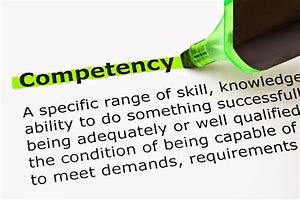Note: This is an update of One-Room Schools: Outdated, or Ahead of Their Time? (January 29, 2018).
One-Room Schools from Childhood
I’ve always been fascinated by the old one-room schoolhouses. I think it all started when my younger sister and I would walk up our country road and play for hours on the site of an old school, long since abandoned. That school must have educated every boy and girl for miles around, and those children grew up to be postal carriers, soldiers, bankers, farmers, and teachers.
In that school and others like it, students from multiple age groups and grade levels worked and learned together. In many instances, older students taught younger ones, with the teacher providing guidance as needed. Classics frequently served in the place of textbooks, and students applied what they were learning in the context of what was relevant to their lives. They developed a body of knowledge, but even more importantly, they learned how to apply that knowledge to solve problems. Sounds to me like those teachers may have influenced the thinking of Benjamin Bloom as he developed his Taxonomy that’s still alive and well today.
Ahead of Their Time
It was a simpler time, and yet many of the methods found in those one-room schools were ahead of their time. Today we often hear about new techniques and methods for helping students learn. We talk about concepts such as competency-based, proficiency-based, and personalized learning. I would argue that besides a homeschool environment, one-room schools were the birthplace of individualized instruction.
And the performance-based assessments that we often use today? Students in one-room schools often had to demonstrate what they knew through projects such as planting an herb garden appropriate for local soil; raising goats for meat and dairy; making apple butter; building a machine shed that could stand up to wind; or providing first aid.
Like the competency-based educational model, Simousek points out that most one-room schools adhered to the “time is variable/learning is constant” mantra, whereby learners worked on topics and skills until they could successfully demonstrate their proficiency before moving on. In other words:
What students learn is more important than how quickly they learn it.
We also know that students are more actively engaged and achieve more when there is a community of learners. Moreover, we know they excel when teachers and parents work closely together. This requires strong relationships, communication, and trust–none of which develop overnight—they take time. That’s another benefit of the one-room school model: Students remain with one teacher for multiple years, allowing rich bonds to form between teacher, pupil, and families. Quite frankly, it’s something that’s often missing in schools today. However, the concept of “looping” has been introduced in the past few years as a “new” instructional practice designed to foster learning. The basic premise? To enhance student learning and development by working with the same teacher 2-3 years in order to build trust, communication, and relationships. Not really a new concept after all.
One-Room Schools Today
There are actually still a few hundred one-room schools in the United States today, many located in very rural and remote areas. However, a charter school in Gainsville, Florida was started in 1997 specifically with the one-room school model in mind. Focusing on meeting the needs of high achievers, the One Room School House Project (ORSH) serves students through eighth grade. In addition, some modern-day homeschools are perfect venues for the one-room schoolhouse model.
While I recognize the benefits of larger schools today, I have to wonder if perhaps we need to reconsider the benefits of smaller schools designed around the one-room schoolhouse model. Even in our fast-paced, mobile society, I believe there is still a need for schools that serve as community anchors; that can truly provide individualized instruction and support for all learners; and that prepare students to interact with others in a positive way. Maybe an old-school approach is worth another look today.
###
About the Author: Dr. Roberta Ross-Fisher has expertise in educator preparation, accreditation, online teaching & learning, and competency-based education. A former public school teacher and college administrator, Roberta is now an educational consultant.
Top image credit: Lena Road Schoolhouse


